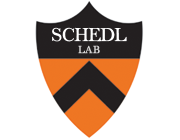Boundaries mediate long-distance interactions between enhancers and promoters in the Drosophila Bithorax complex
Publication Year
2018
Type
Journal Article
Abstract
Drosophila bithorax complex (BX-C) is one of the best model systems for studying the role of boundaries (insulators) in gene regulation. Expression of three homeotic genes, Ubx, abd-A, and Abd-B, is orchestrated by nine parasegment-specific regulatory domains. These domains are flanked by boundary elements, which function to block crosstalk between adjacent domains, ensuring that they can act autonomously. Paradoxically, seven of the BX-C regulatory domains are separated from their gene target by at least one boundary, and must "jump over" the intervening boundaries. To understand the jumping mechanism, the Mcp boundary was replaced with Fab-7 and Fab-8. Mcp is located between the iab-4 and iab-5 domains, and defines the border between the set of regulatory domains controlling abd-A and Abd-B. When Mcp is replaced by Fab-7 or Fab-8, they direct the iab-4 domain (which regulates abd-A) to inappropriately activate Abd-B in abdominal segment A4. For the Fab-8 replacement, ectopic induction was only observed when it was inserted in the same orientation as the endogenous Fab-8 boundary. A similar orientation dependence for bypass activity was observed when Fab-7 was replaced by Fab-8. Thus, boundaries perform two opposite functions in the context of BX-C-they block crosstalk between neighboring regulatory domains, but at the same time actively facilitate long distance communication between the regulatory domains and their respective target genes.
Keywords
Animals,
Mutation,
Promoter Regions, Genetic,
Transcription Factors,
Models, Genetic,
Female,
Male,
Nuclear Proteins,
Animals, Genetically Modified,
Regulatory Sequences, Nucleic Acid,
Drosophila melanogaster,
Homeodomain Proteins,
Enhancer Elements, Genetic,
Drosophila Proteins,
Genes, Insect,
Genes, Homeobox,
Insulator Elements
Journal
PLoS Genet
Volume
14
Issue
12
Pages
e1007702
Date Published
12/2018
ISSN Number
1553-7404
Alternate Journal
PLoS Genet
PMID
30540750

